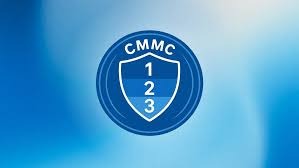
The Key Cyber Hygiene Practices in CMMC Level 1 Requirements
- Lily James
- 0
- on Jun 02, 2025
Everyone knows how messy things can get without routine cleanup—your digital environment is no different. In the world of defense contracting and sensitive data handling, even small cybersecurity missteps can open big doors for trouble. That’s why the practices in the CMMC Level 1 requirements focus on the basics done right, every time.
Establishing Ironclad Password Discipline Across Your Organization
Weak passwords are like leaving your office door wide open overnight. One of the most overlooked issues in the early stages of cybersecurity maturity is inconsistent password practices. CMMC Level 1 requirements stress the importance of strong, unique passwords used across all systems. But it’s not just about complexity—it’s also about culture. Everyone, from interns to executives, needs to understand the why behind secure password habits.
An organization serious about meeting CMMC compliance requirements trains staff regularly on password updates, avoids reusing credentials across platforms, and deploys policies that prevent default or easily guessed combinations. Password management tools help support these habits without adding friction. This is foundational in both cmmc level 1 requirements and cmmc level 2 requirements—it’s one of the first defenses in reducing unauthorized access and ensuring account security during any CMMC assessment.
Routine Patch Management to Neutralize Emerging Cyber Threats
Outdated software isn’t just inefficient—it’s dangerous. Every missed update can become an unlocked window for potential intruders. Routine patch management is a core practice within CMMC Level 1 requirements, aiming to keep operating systems, applications, and devices protected from known vulnerabilities. These updates may seem routine or minor, but they’re often direct responses to real-world exploits that attackers are actively using.
Organizations meeting CMMC compliance requirements prioritize a systematic patching process. This means assigning responsibility, setting timelines, and verifying each update is successfully applied. It’s not enough to say “we’ll get to it later.” Delays create exposure. Even with limited internal IT resources, tools that automate patching schedules can take the weight off staff and close security gaps faster. In the eyes of a CMMC assessment, this kind of consistency shows that the organization takes data protection seriously.
Implementing Controlled Access to Limit Digital Footprints
Not everyone needs access to everything. Giving users more access than necessary adds unnecessary risk, and that’s where access control plays its part. CMMC Level 1 requirements ask organizations to limit system access to only those who need it to perform their job duties. This reduces the chance that sensitive data will end up in the wrong hands—either by accident or intent.
Instead of one-size-fits-all access, companies aiming for CMMC compliance requirements use role-based permissions and user management strategies. Temporary access for contractors, automatic deactivation of unused accounts, and regular audits of who has access to what can go a long way. Smaller businesses often overlook this step, thinking it’s only relevant to bigger networks. But even in a tight-knit team, limiting unnecessary access is one of the smartest and most effective safeguards, especially when preparing for a CMMC assessment.
Reliable Malware Defenses to Block Everyday Cyber Intrusions
Every device connected to a company’s network can act as a gateway for harmful software. That’s why CMMC Level 1 requirements include the use of malware protection as a basic—but vital—defensive step. Antivirus tools and endpoint protection aren’t flashy, but they’re the gatekeepers against constant background threats that probe for vulnerabilities.
Meeting CMMC compliance requirements involves more than just installing antivirus software—it requires configuring tools correctly, ensuring real-time protection is active, and verifying that systems are regularly scanned. Organizations often integrate this into their larger cybersecurity strategy, so malware doesn’t get missed in the chaos of day-to-day operations. Whether the network includes ten devices or a thousand, malware defenses must be reliable, visible, and actively maintained.
Secure Disposal of Obsolete Hardware and Sensitive Data
When devices reach the end of their useful life, tossing them in a closet—or worse, a dumpster—isn’t just careless. It’s a compliance issue. CMMC Level 1 requirements expect that sensitive data is properly destroyed before any equipment leaves the premises. This goes for hard drives, USBs, laptops, and even old paper files that contain protected information.
The disposal process should involve secure wiping, physical destruction, or working with a certified vendor. A good estate of documentation for each disposal action also supports a clean CMMC assessment. Many organizations forget about what’s hiding on old hardware, but for those following CMMC compliance requirements, this step is part of a full-circle security mindset. It’s not just about how data is protected while in use—it’s also about how it’s handled when it’s no longer needed.
Basic Network Boundary Protection for Consistent Security
CMMC Level 1 requirements include the protection of network boundaries, and for good reason. These digital borders are the first line of defense between internal systems and external traffic. Firewalls, filtering tools, and segmented networks help control what goes in and out, keeping threats from freely moving across systems.
For companies pursuing CMMC Level 2 requirements or a successful CMMC assessment, boundary protection is not optional—it’s expected. Even simple measures like router configuration, blocking unused ports, and segmenting sensitive devices can provide a solid line of defense. Consistency is key. A network boundary is only as strong as its weakest rule or overlooked device. With the right practices in place, even small businesses can build security habits that stand up to the growing risks in today’s connected world.